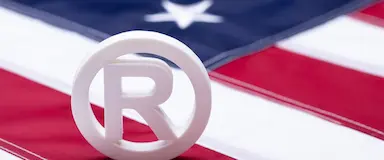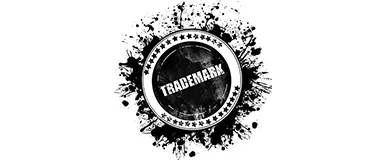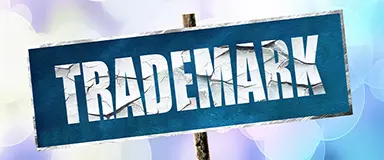Complete step-by-step guide to registering a trademark with the USPTO in 2025. Learn filing requirements, costs ($350 base fee), timelines (12-18 months), and maintenance requirements.
Suffering From Success: Companies Lose Trademarks to Genericide
Written by Adrian Torres ·

Congratulations. You’ve successfully registered a trademark for your branding and are ready to enforce it. But there’s a problem. You become so wildly popular that everyone everywhere is using your services. And competitors are starting to get wind of it and piggybacking on it.
It’s an interesting problem to have, but it might not be a bad one. You likely wouldn’t have reached this article without “googling,” after all. But let’s unpack how companies can lose their trademark and what can be done to prevent it.
What Is Genericide?
Legally speaking, “genericide” or “genericization” occurs when a brand has so much market dominance it threatens to become a monopoly. At that point, the “generic” term for the company’s offer (whether it’s a product or service) starts getting replaced by the company’s trademark. This creates a paradoxical result where the term is no longer solely associated with the originator, but can also apply to other similar products or services.
There are several notable examples of genericide:
- Air fryer: The term is trademarked by Phillips outside of the U.S., but U.S. courts have ruled that the term is too descriptive to be trademarked inside the country.
- Aspirin: The drug is trademarked by the manufacturer Bayer in over 80 countries, but can be sold by other producers generically as aspirin (rather than acetylsalicylic acid) in the U.S. and many others.
- Flip phone: Originally trademarked by Motorola, whereas the generic term is “clamshell design.”
- Freon: Commonly used to refer to any type of refrigerant (such as for fridges and ACs), while the actual trademark is for specific compounds manufactured by The Chemours Company.
- Google: Google LLC still owns the trademark for the browser engine, but the term has entered common use as a verb.
- Glock: Commonly used to refer to any type of semi-automatic pistol, even though it’s a specific manufacturer.
- Jeep: SUVs manufactured by Chrysler are trademarked as “Jeeps,” but the term has become common for any SUV outside of the U.S.
- Mace: “Mace” is only one of the few types of pepper sprays available.
- Post-It: Legally recognized trademark owned by 3M for their sticky notes.
The process of genericization can take a while, and happen unevenly between territories. An existing trademark in one country can become genericized in another, which leads to various countries and languages developing different slang for common products.
Underlying Causes of Genericide
The cause of genericide is relatively broad but ultimately comes from a lack of distinction between brands vs. trademarks. As businesses try to “one up” each other with unique and memorable branding, they may inadvertently become their downfall.
This comes from the fact that modern businesses are naturally inclined to use their product name rather than what it represents in marketing. As those marketing efforts become all-encompassing, the trademark eventually becomes synonymous with the generic term itself. This typically happens when the brand omits what the product is or represents in its marketing, referring only to the trademark, or aggressively marketing themselves over the alternatives.
Another big factor is the aforementioned success of the company. If the product is so good or widespread that it doesn’t have a large enough competitor, customer perception will naturally shift to considering only using the trademarked name. This happened to Xerox, where it practically cornered the photocopier market so much that some people (and entire languages) started using “Xerox” for a verb “to photocopy.”
How Businesses Fight Genericide?
Ultimately, when a business registers a trademark, it’s up to the company to enforce its rights against competition. However, when the term becomes so ingrained in society that it’s approaching generalization, companies can fight a losing battle in the eyes of the law to maintain their hold over their own trademark.
There doesn’t seem to be a “right” strategy for preventing this phenomenon.
For one, smart and timely trademark enforcement is one of the best ways to discourage (but not prevent) genericization. If a company proactively protects its brand from infringement and does so on a potentially global level through an international trademark, it sends a clear message to other businesses trying to work in the same niche. This boils down to having a dedicated pipeline and automated methods for detecting and combating infringement through legal means, as well as enough legal support to enforce it.
Secondly, smart marketing tactics need to educate the user on how to correctly use the brand name and the trademark. If done right, the company can make a catchy slogan that still retains both the generic and trademarked names. If done wrong, it can result in even more aggressive marketing, this time to remedy the situation.
Band-Aid, for example, makes sure that all of its marketing refers to “Band-Aid brand” rather than just “Band-Aid,” and is still losing the fight to genericide in the U.S., where the common term “plaster” is practically unknown. This came after decades of Johnson & Johnson using the slogan “I am stuck on Band-Aid, ‘cuz Band-Aid’s stuck on me,” only deciding to change it in 2007.
Finally, companies need to know the ins and outs of trademark law, especially when it comes to differentiating between local and international usage. This typically comes only by consulting attorneys who have extensive experience in the area, which can require significant resources. The result, however, will be worth it, as it will ensure that your customers stay loyal to your brand through consistent trademark usage.


